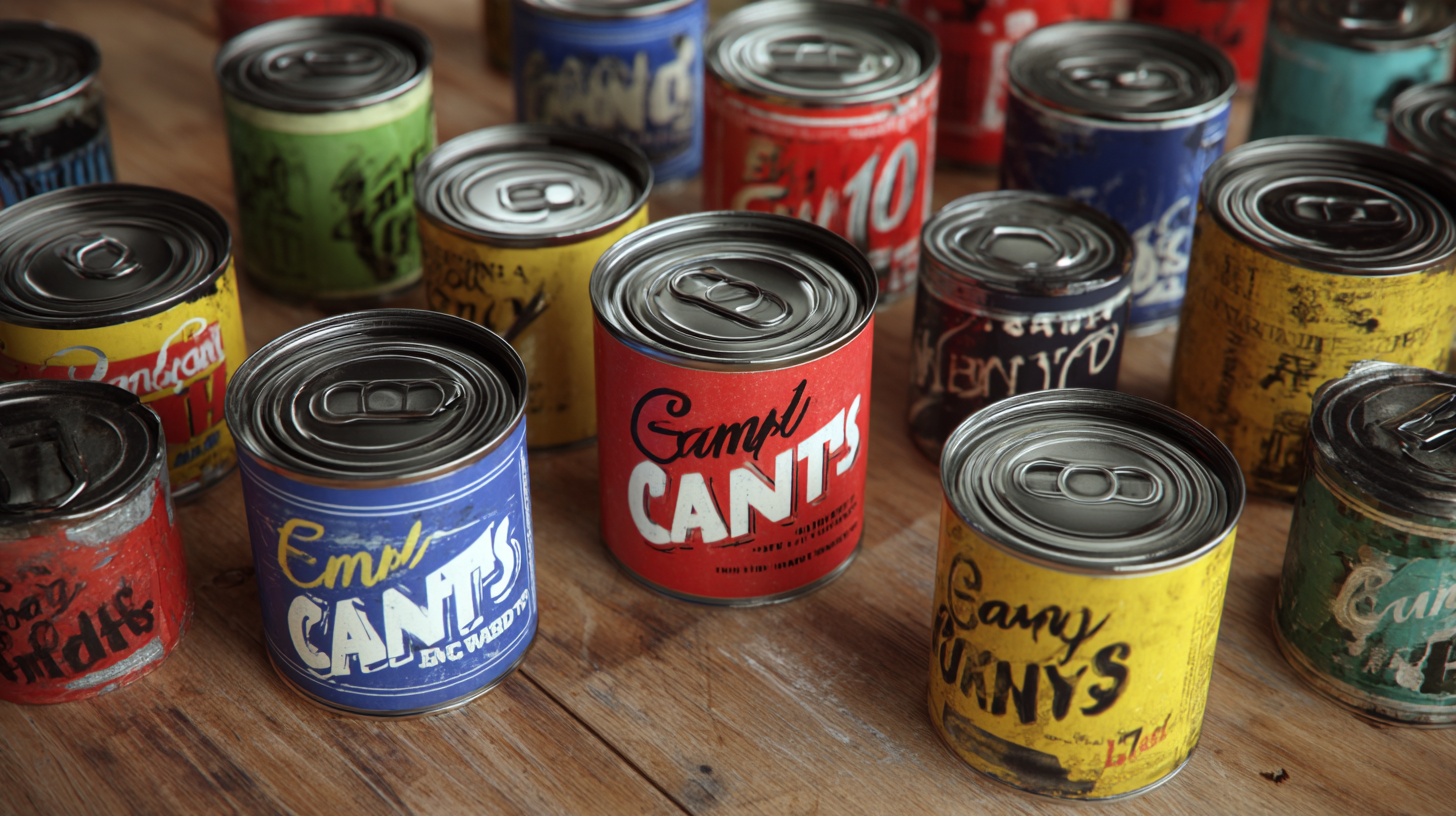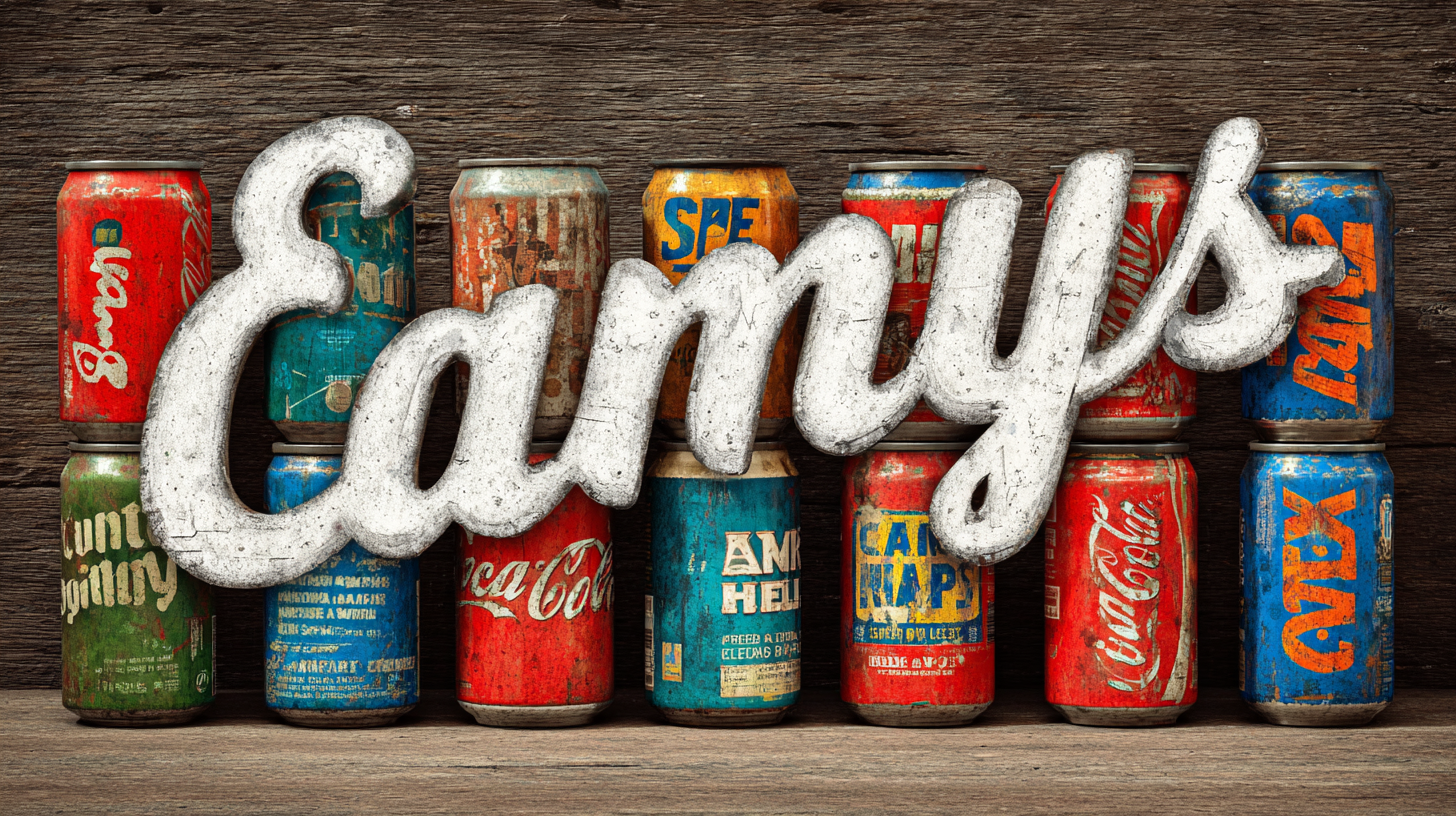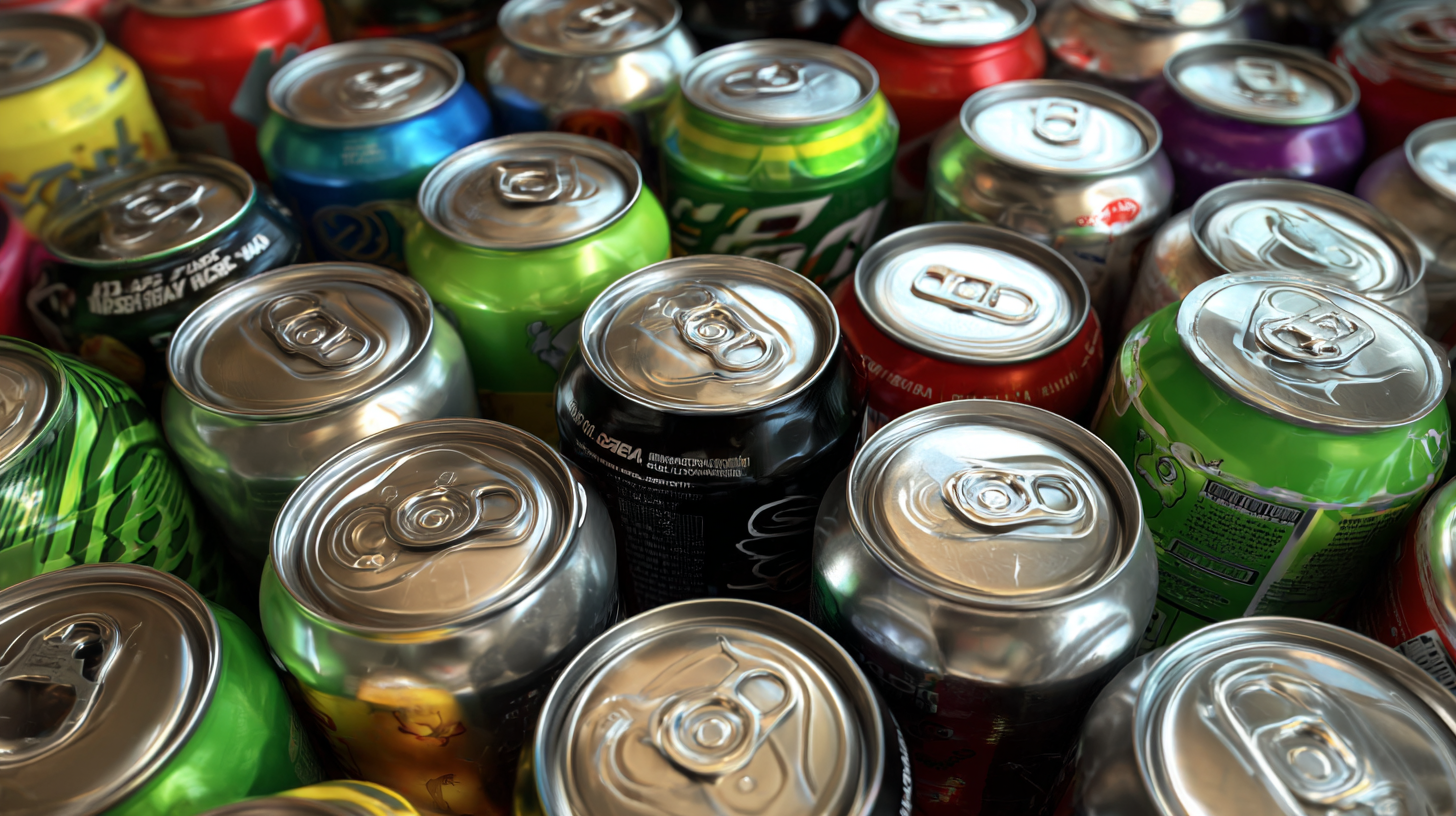 +8618680445103
+8618680445103
Free Standard Samples can be provided for you to check the quality.
Leave Your Message
In the increasingly competitive landscape of packaging solutions, choosing the right materials is crucial for product success, and empty cans have emerged as a popular option across various industries. According to a report by the Metal Packaging Association, the global metal can market is projected to reach $38.26 billion by 2025, driven primarily by consumer demand for sustainable and recyclable packaging options. Empty cans not only offer excellent preservation qualities for food and beverages but also align with the growing emphasis on eco-friendly practices, as they are 100% recyclable. This ultimate guide aims to navigate through the numerous factors involved in finding the best empty cans for your packaging needs, including material considerations, capacity options, and coatings, ensuring that you make an informed choice that enhances both product integrity and brand image.

When it comes to choosing empty cans for packaging, several essential factors should be considered to align with sustainability goals. As awareness of environmental issues grows, particularly concerning the excessive reliance on plastic, brands and consumers are exploring eco-friendly alternatives. This shift is driven by the need to minimize waste and the significant impact of packaging waste on pollution levels. When selecting empty cans, one must assess the material used; aluminum and steel are popular choices due to their recyclability and lower environmental footprint compared to plastic.
Moreover, the size and shape of the cans are crucial for storage and transportation efficiency. Cans that effectively utilize space can reduce overall waste and streamline distribution processes. Additionally, it’s essential to consider the compatibility of the can with the product it will contain. The right can should not only protect the product but also maintain its quality over time. As the beauty industry starts embracing refillable and reusable packaging solutions, choosing the best empty cans becomes vital for both businesses and eco-conscious consumers alike.
Empty cans are not just containers; they are a strategic choice for many businesses in the packaging industry. First and foremost, they offer excellent durability. According to a report by the Aluminum Association, aluminum cans can withstand impact and pressure far better than plastic options, which makes them ideal for a variety of products including beverages and foods. Additionally, using empty cans has been shown to extend product shelf life, maintaining the quality and freshness of items for longer periods.
Another key benefit is sustainability. A study from the Can Manufacturers Institute indicates that aluminum cans are infinitely recyclable, with 75% of all aluminum ever produced still in use today. This commitment to sustainability can significantly enhance a brand's image and appeal to environmentally conscious consumers. When choosing empty cans, look for suppliers that emphasize recycled materials, as this not only reduces environmental impact but can also lower costs.
Tip: Ensure to select the right can size for your product, as this can influence consumer perception and convenience. Additionally, consider the ease of labeling and branding; well-designed labels can attract more customers. Finding the right can supplier who understands your unique needs is crucial for effective packaging solutions.

When selecting empty cans for your packaging needs, the material of the can plays a crucial role in preserving your product's quality and ensuring its safety. The top three materials to consider are aluminum, steel, and tin. Each of these has unique properties that cater to different types of products.
Aluminum cans are lightweight, have excellent resistance to corrosion, and provide a barrier against light and oxygen, making them ideal for beverages and sensitive food products. Their recyclability also makes them a popular choice among eco-conscious brands.
On the other hand, steel cans are often preferred for products that require sturdier packaging, such as soups or sauces. They are incredibly durable and can withstand higher internal pressures, ensuring the safety of canned goods during transport.
Tin cans, while often confused with steel, have a thin layer of tin to prevent rusting and enhance food safety. They are widely used for items like canned vegetables and meats, providing a good balance of protection and lightweight convenience. Ultimately, the right material for your empty can will depend on your product's specific requirements, such as storage conditions, shelf life, and packaging aesthetics.
In a world increasingly focused on sustainability, empty cans are finding new life in creative and practical applications beyond mere packaging. From beauty enthusiasts to DIY aficionados, there are numerous ways to repurpose these often-overlooked items. For instance, beauty fans can turn in five eligible empty health and beauty products at select retailers and unlock rewards, showcasing an innovative approach to incentivize recycling. This not only encourages responsible waste management but also highlights the value hidden within empty containers.

Moreover, the rise of reuse-refill models across various industries signifies a shift towards innovative packaging solutions. Recent trials across diverse markets indicate that up to 100 million plastic bottles and metal cans have been successfully returned and reused, as demonstrated by initiatives in Slovakia. This reinforces the potential of deposit return schemes to not only streamline recycling efforts but also promote consumer participation in sustainability practices. As brands continue to explore innovative packaging, empty cans present unique opportunities for repurposing, driving both creativity and environmental responsibility forward.
When it comes to sourcing quality empty cans for your packaging needs, there are several expert tips that can help you secure the best options at competitive prices. First, it’s vital to conduct thorough market research to identify reputable suppliers. Online platforms, trade shows, and industry publications can provide valuable information on potential vendors. Look for suppliers with positive reviews and a solid track record in product quality and customer service. Additionally, don’t hesitate to request samples before making a bulk purchase, as this will allow you to evaluate the can’s durability and design.
Another crucial factor to consider is negotiating pricing and payment terms. Establishing a good rapport with your suppliers can lead to better deals and discounts, especially for large orders. Be open to discussing long-term partnerships, which can often result in negotiated pricing structures to your advantage. Furthermore, consider the total cost of ownership, including shipping and handling fees, since these can significantly impact your bottom line. By following these expert tips, you can streamline your sourcing process and ensure that you are getting the best value for your empty cans.
